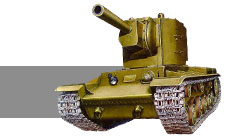


Countries
| 38.4% |  | Russia |
| 13% |  | USA |
| 10.5% |  | Ukraine |
| 5.9% |  | Germany |
| 4.5% |  | Poland |
Visitors
| Today: | 162 |
| Yesterday: | 1721 |
| This Week: | 162 |
| Last Week: | 12502 |
| This Month: | 39628 |
| Last Month: | 35837 |
| Total: | 87870 |
First Soviet Trucks |
 |
 |
Created Tuesday, 20 September 2005 19:03
|
||
Last Updated on Tuesday, 22 September 2009 21:10
|
||
|
The birthdate of Soviet Truck Production is November 7th 1924, when for the first time, first Soviet trucks In In In By the end of In total, by the beginning of the 30’s, USSR produced no more than Despite of their positive attributes, both There were quite a few people, including some really influential, who were trying to prove, that in Soviet climate, bad roads and rural type of life, carriage and sledge are not going to be replaced by an automobile. But you have to understand those automobile opponents. After tsarist times, country had a network of poor quality roads, with only 2-3% being ‛paved“ by uneven rocks. In most parts roads were covered with snow most months of the year, and during wet spring and fall seasons, they would become unsuitable for transportation. Also, illiterate peasants made up at least 70% of all population. To add to that, influence of post-revolution modest type of life for Soviet people remained, and that did not include automobiles as an everyday thing. To most people cars seemed to be a luxury item, common only in capitalist society ‛Avtodor“ did not stop on discussions and on propaganda. New drivers were coming out of its schools. Members participated in road building, in planning and holding car races. By holding lottery draws, where main prizes were cars and motorcycles, ‛Autodor“ was collecting funds for building and maintaining roads, on developing plans and organizing production of NAMI-1, six wheeled cars for Red Army. It was only a small part of what was going on in a country in an effort to promote cars, but it should be noted, that results of discussions shortened building times and increased scales of constructions of automobile plants, and every lottery draw brought in millions of rubles in profit. Among the largest constructions in first five year plan were Lower Novgorod (now Gorky) auto plant, and also reconstruction of AMO and Yaroslavl plants. Early plans planned the production of Foreign firms readily offered Soviet Union its products. But which models to choose? To answer this questions, Soviet specialists tested American cars in a long test drive. During fall, on poor roads of Russia, elegant foreign cars went across small towns and villages, which have not yet seen automobiles. Results of test drive: no advantage of ‛Chevrolet“, except for smooth running of its Out of When looking at the competing cars, it might seem that ‛Ford“ lacks the modern look of other competitors; it still resembled Model ‛T“. But Russian specialists judged car not only how it looks, but how it works. The look of the car did not seem to be too important at that time. Also, it was taken into a consideration, that production will start with a better looking model of 1930, and that based on a passenger car, Ford constructed a very successful one and a half ton truck, which in times of industrialization was perhaps even more important for Talks were held with ‛Ford“ and with ‛General Motors“, but conditions of the first one were more favorable, and in May In the same year, reconstructed AMO plant began a production of 2,5 ton lorry based on American model ‛Otocar“. Big role in starting a production on a renewed plant, as well as in Soviet auto production, was played by its ‛red director“ Ivan Alexeevitch Likhatchev (1896 – 1966), in whose honor AMO is Less than Only three cars in a race were built out of foreign parts. The rest twenty Conditions of the run were very harsh. Temperatures in cabins reached Special interest was in a test of tires made out of domestic synthetic rubber (SR), which passed the run very well. Their wear did not differ from wear of tires made of natural rubber. «Sverhballons» were offered by Moscow Science and Research Institute of tire industry. While changes were minor, they altered the look and road performance of the cars. GAZs with standard tires passed half of the run, pretty much on shoulders of its crews. Vehicles with ‛sverhballon“ would drive on a desert just like on asphalt. All cars finished Karakum run without any significant damages. This harsh test gave constructors new valuable knowledge. New oil air filters – an odd idea at a time – saved engines from dust, and since then, became standard in Soviet vehicles. As a result of tire tests ‛sverhballon“, tires with larger volume and lower pressure began to be used on all Soviet cars. Just as it was suspected, radiators would have to be enlarged. Changes were to be made in constructions of front running gear for three wheel shaft cars. ‛Izvestiya“ newspaper, on October 3rd of Sources:
|
You need to login or register to post comments.
Discuss this item on the forums. (0 posts)
© THE RUSSIAN BATTLEFIELD, 1998-2009







